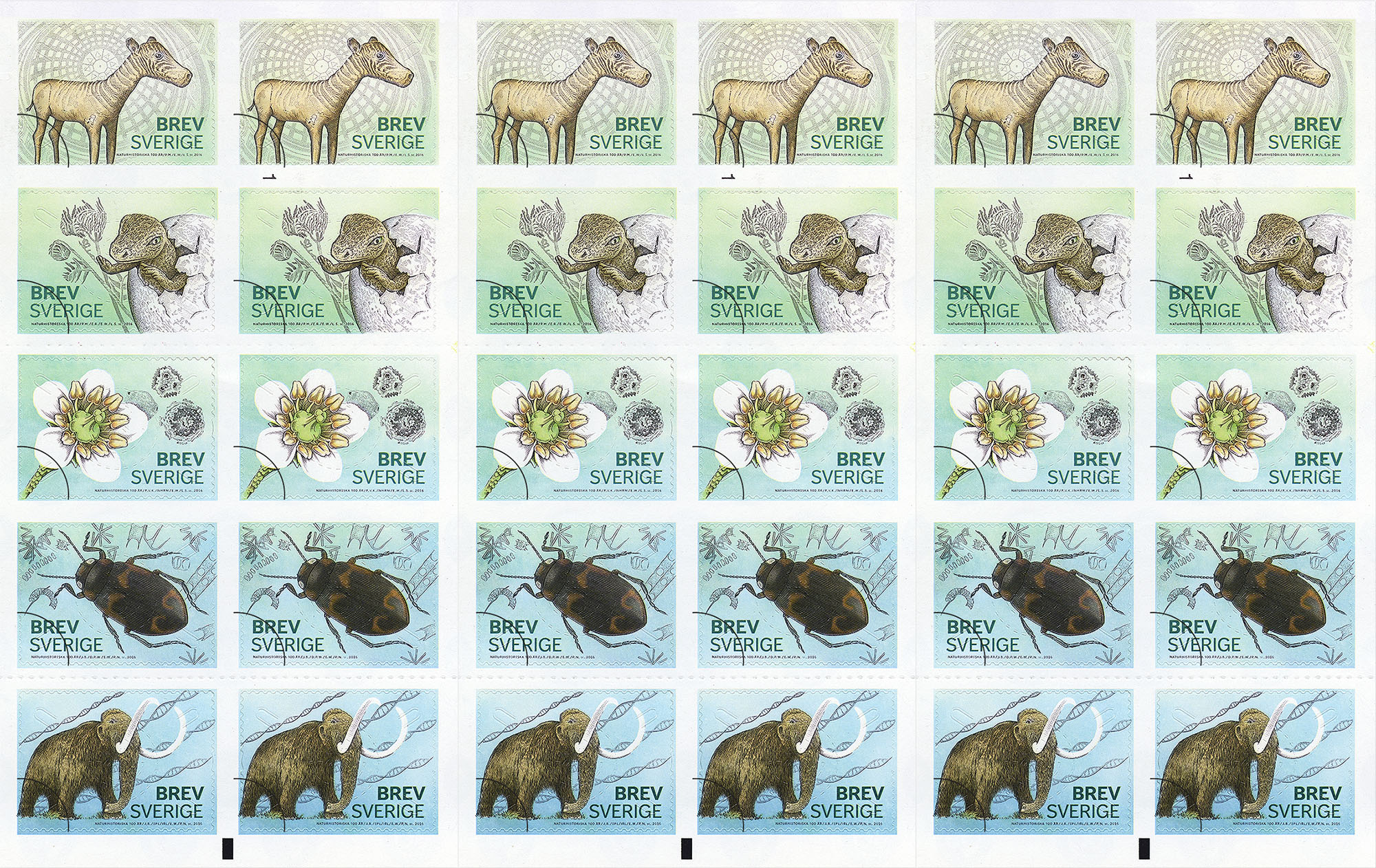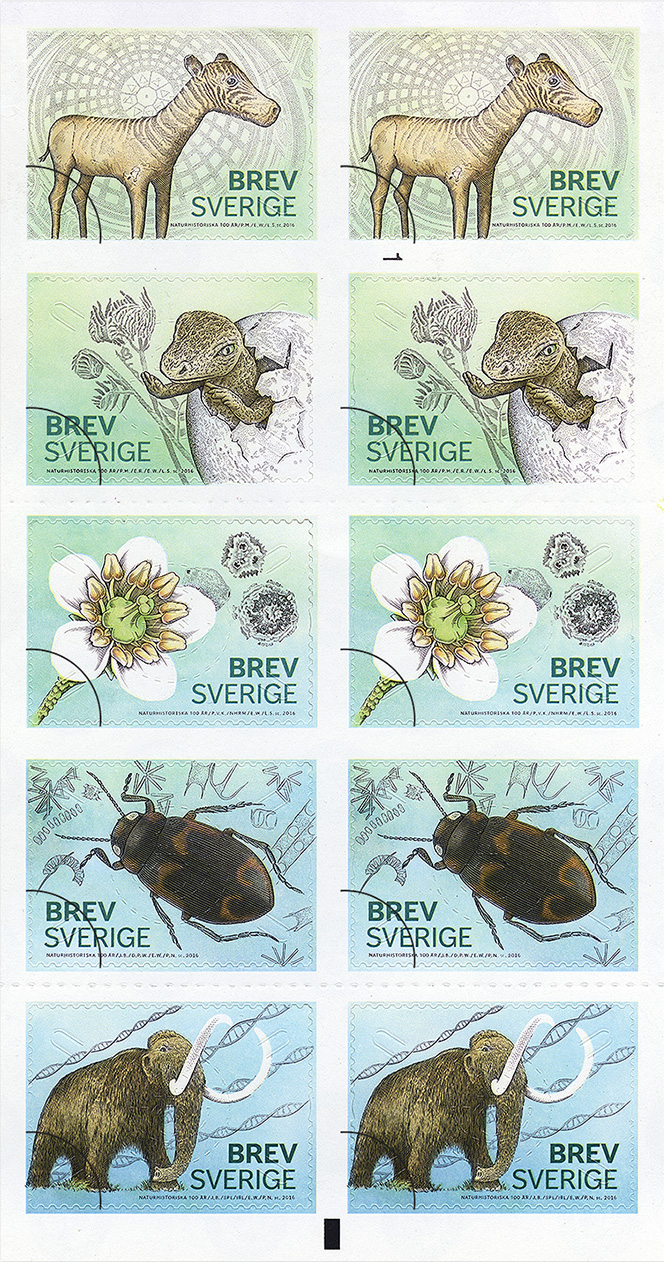Styles
About FF Dagny Pro
When DN transitioned to a tabloid format, a new typeface was created – DN Grotesk. Our inspiration came from old type specimens found in DN’s own historical archives. The typeface was designed to have higher contrast and a tall x-height. In these historical references, we discovered period-appropriate details that gave the new typeface character, such as a lowercase ”f” with a backward-leaning overhang. The typeface also saved valuable space by shortening both ascenders and descenders.
DN Grotesk was used in the newspaper for a period of ten years. When we regained the rights to it, it was given the name Dagny, a contraction of ”Dagens Nyheter.” It was launched by FontFont in 2009, and FF Dagny received the ISTD (International Society of Typographic Designers) International Typographic Award in 2011.
- Design team
-
Örjan Nordling, Fredrik Andersson, Carolina Laudon, Gary Newman, Göran Söderström
- Client
-
Mario Garcia, John Bark/Dagens Nyheter, Erik Spiekermann, FontFont Berlin
Opentype features
Thin
Investigate
Thin italic
Circulation
Light
Pagination
Light italic
Pressroom
Regular
Coverage
Italic
Headlines
Bold
Editorials
Bold italic
Journalist
Black
Deadline
Black italic
Reporter


Thin
Dating back to the 17th century, Sweden saw the emergence of early newspapers primarily focused on political discourse and governmental affairs. The first Swedish newspaper, Ordinari Post Tijdender, was published in 1645, marking the beginning of a tradition that would significantly shape the nation’s media landscape. Throughout the 18th and 19th centuries, the press played a vital role in shaping public opinion and fostering the development of democracy in Sweden. Newspapers such as Aftonbladet and Dagens Nyheter became influential voices in the dissemination of news and the expression of political ideologies. The 20th century brought about significant advancements in technology, leading to the rise of mass media and the proliferation of newspapers across Sweden. Radio and television emerged as formidable competitors to print journalism, challenging traditional news outlets to adapt to new mediums. In contemporary times, Swedish journalism continues to evolve in response to digitalization and globalization.
Thin italic
Dating back to the 17th century, Sweden saw the emergence of early newspapers primarily focused on political discourse and governmental affairs. The first Swedish newspaper, Ordinari Post Tijdender, was published in 1645, marking the beginning of a tradition that would significantly shape the nation’s media landscape. Throughout the 18th and 19th centuries, the press played a vital role in shaping public opinion and fostering the development of democracy in Sweden. Newspapers such as Aftonbladet and Dagens Nyheter became influential voices in the dissemination of news and the expression of political ideologies. The 20th century brought about significant advancements in technology, leading to the rise of mass media and the proliferation of newspapers across Sweden. Radio and television emerged as formidable competitors to print journalism, challenging traditional news outlets to adapt to new mediums. In contemporary times, Swedish journalism continues to evolve in response to digitalization and globalization.
Extralight
Dating back to the 17th century, Sweden saw the emergence of early newspapers primarily focused on political discourse and governmental affairs. The first Swedish newspaper, Ordinari Post Tijdender, was published in 1645, marking the beginning of a tradition that would significantly shape the nation’s media landscape. Throughout the 18th and 19th centuries, the press played a vital role in shaping public opinion and fostering the development of democracy in Sweden. Newspapers such as Aftonbladet and Dagens Nyheter became influential voices in the dissemination of news and the expression of political ideologies. The 20th century brought about significant advancements in technology, leading to the rise of mass media and the proliferation of newspapers across Sweden. Radio and television emerged as formidable competitors to print journalism, challenging traditional news outlets to adapt to new mediums. In contemporary times, Swedish journalism continues to evolve in response to digitalization and globalization.
Extralight italic
Dating back to the 17th century, Sweden saw the emergence of early newspapers primarily focused on political discourse and governmental affairs. The first Swedish newspaper, Ordinari Post Tijdender, was published in 1645, marking the beginning of a tradition that would significantly shape the nation’s media landscape. Throughout the 18th and 19th centuries, the press played a vital role in shaping public opinion and fostering the development of democracy in Sweden. Newspapers such as Aftonbladet and Dagens Nyheter became influential voices in the dissemination of news and the expression of political ideologies. The 20th century brought about significant advancements in technology, leading to the rise of mass media and the proliferation of newspapers across Sweden. Radio and television emerged as formidable competitors to print journalism, challenging traditional news outlets to adapt to new mediums. In contemporary times, Swedish journalism continues to evolve in response to digitalization and globalization.
Light
Dating back to the 17th century, Sweden saw the emergence of early newspapers primarily focused on political discourse and governmental affairs. The first Swedish newspaper, Ordinari Post Tijdender, was published in 1645, marking the beginning of a tradition that would significantly shape the nation’s media landscape. Throughout the 18th and 19th centuries, the press played a vital role in shaping public opinion and fostering the development of democracy in Sweden. Newspapers such as Aftonbladet and Dagens Nyheter became influential voices in the dissemination of news and the expression of political ideologies. The 20th century brought about significant advancements in technology, leading to the rise of mass media and the proliferation of newspapers across Sweden. Radio and television emerged as formidable competitors to print journalism, challenging traditional news outlets to adapt to new mediums. In contemporary times, Swedish journalism continues to evolve in response to digitalization and globalization.
Light italic
Dating back to the 17th century, Sweden saw the emergence of early newspapers primarily focused on political discourse and governmental affairs. The first Swedish newspaper, Ordinari Post Tijdender, was published in 1645, marking the beginning of a tradition that would significantly shape the nation’s media landscape. Throughout the 18th and 19th centuries, the press played a vital role in shaping public opinion and fostering the development of democracy in Sweden. Newspapers such as Aftonbladet and Dagens Nyheter became influential voices in the dissemination of news and the expression of political ideologies. The 20th century brought about significant advancements in technology, leading to the rise of mass media and the proliferation of newspapers across Sweden. Radio and television emerged as formidable competitors to print journalism, challenging traditional news outlets to adapt to new mediums. In contemporary times, Swedish journalism continues to evolve in response to digitalization and globalization.
Regular
Dating back to the 17th century, Sweden saw the emergence of early newspapers primarily focused on political discourse and governmental affairs. The first Swedish newspaper, Ordinari Post Tijdender, was published in 1645, marking the beginning of a tradition that would significantly shape the nation’s media landscape. Throughout the 18th and 19th centuries, the press played a vital role in shaping public opinion and fostering the development of democracy in Sweden. Newspapers such as Aftonbladet and Dagens Nyheter became influential voices in the dissemination of news and the expression of political ideologies. The 20th century brought about significant advancements in technology, leading to the rise of mass media and the proliferation of newspapers across Sweden. Radio and television emerged as formidable competitors to print journalism, challenging traditional news outlets to adapt to new mediums. In contemporary times, Swedish journalism continues to evolve in response to digitalization and globalization.
Regular italic
Dating back to the 17th century, Sweden saw the emergence of early newspapers primarily focused on political discourse and governmental affairs. The first Swedish newspaper, Ordinari Post Tijdender, was published in 1645, marking the beginning of a tradition that would significantly shape the nation’s media landscape. Throughout the 18th and 19th centuries, the press played a vital role in shaping public opinion and fostering the development of democracy in Sweden. Newspapers such as Aftonbladet and Dagens Nyheter became influential voices in the dissemination of news and the expression of political ideologies. The 20th century brought about significant advancements in technology, leading to the rise of mass media and the proliferation of newspapers across Sweden. Radio and television emerged as formidable competitors to print journalism, challenging traditional news outlets to adapt to new mediums. In contemporary times, Swedish journalism continues to evolve in response to digitalization and globalization.
Bold
Dating back to the 17th century, Sweden saw the emergence of early newspapers primarily focused on political discourse and governmental affairs. The first Swedish newspaper, Ordinari Post Tijdender, was published in 1645, marking the beginning of a tradition that would significantly shape the nation’s media landscape. Throughout the 18th and 19th centuries, the press played a vital role in shaping public opinion and fostering the development of democracy in Sweden. Newspapers such as Aftonbladet and Dagens Nyheter became influential voices in the dissemination of news and the expression of political ideologies. The 20th century brought about significant advancements in technology, leading to the rise of mass media and the proliferation of newspapers across Sweden. Radio and television emerged as formidable competitors to print journalism, challenging traditional news outlets to adapt to new mediums. In contemporary times, Swedish journalism continues to evolve in response to digitalization and globalization.
Bold italic
Dating back to the 17th century, Sweden saw the emergence of early newspapers primarily focused on political discourse and governmental affairs. The first Swedish newspaper, Ordinari Post Tijdender, was published in 1645, marking the beginning of a tradition that would significantly shape the nation’s media landscape. Throughout the 18th and 19th centuries, the press played a vital role in shaping public opinion and fostering the development of democracy in Sweden. Newspapers such as Aftonbladet and Dagens Nyheter became influential voices in the dissemination of news and the expression of political ideologies. The 20th century brought about significant advancements in technology, leading to the rise of mass media and the proliferation of newspapers across Sweden. Radio and television emerged as formidable competitors to print journalism, challenging traditional news outlets to adapt to new mediums. In contemporary times, Swedish journalism continues to evolve in response to digitalization and globalization.
Black
Dating back to the 17th century, Sweden saw the emergence of early newspapers primarily focused on political discourse and governmental affairs. The first Swedish newspaper, Ordinari Post Tijdender, was published in 1645, marking the beginning of a tradition that would significantly shape the nation’s media landscape. Throughout the 18th and 19th centuries, the press played a vital role in shaping public opinion and fostering the development of democracy in Sweden. Newspapers such as Aftonbladet and Dagens Nyheter became influential voices in the dissemination of news and the expression of political ideologies. The 20th century brought about significant advancements in technology, leading to the rise of mass media and the proliferation of newspapers across Sweden. Radio and television emerged as formidable competitors to print journalism, challenging traditional news outlets to adapt to new mediums. In contemporary times, Swedish journalism continues to evolve in response to digitalization and globalization.
Black italic
Dating back to the 17th century, Sweden saw the emergence of early newspapers primarily focused on political discourse and governmental affairs. The first Swedish newspaper, Ordinari Post Tijdender, was published in 1645, marking the beginning of a tradition that would significantly shape the nation’s media landscape. Throughout the 18th and 19th centuries, the press played a vital role in shaping public opinion and fostering the development of democracy in Sweden. Newspapers such as Aftonbladet and Dagens Nyheter became influential voices in the dissemination of news and the expression of political ideologies. The 20th century brought about significant advancements in technology, leading to the rise of mass media and the proliferation of newspapers across Sweden. Radio and television emerged as formidable competitors to print journalism, challenging traditional news outlets to adapt to new mediums. In contemporary times, Swedish journalism continues to evolve in response to digitalization and globalization.



